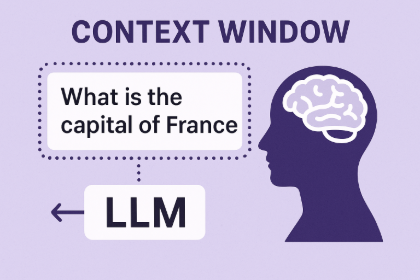A context window is the span of text an LLM can “keep in mind” at once, basically, how much of your question + its own response it can read, understand, and use to generate the next word.
Why context windows matter
- Accuracy drops when important details fall outside the window.
- Prompting strategy changes: you often need to summarize, chunk, or retrieve context.
- Cost scales with larger windows, since more tokens = more compute.
In essence, the context window sets the boundary of the model’s working memory.
Where it’s evolving
Recent LLMs (like Claude and Gemini) have stretched windows to hundreds of thousands of tokens (long enough to fit entire books or codebases).
But the next step isn’t just more tokens — it’s smarter memory: models that decide what to keep, compress, “throw away”, or recall dynamically.
Final thought
If RAG (Retrieval-Augmented Generation) gave models a way to fetch knowledge, context windows define how long they can hold it.
Both are key pieces in the bigger question:
How do we make LLMs think in a broader context, not just react in sequence?
#LLM #AI #ContextWindow #LanguageModels #PromptEngineering
If you’re curious, here’s an interesting research paper evaluating language model context windows: Evaluating Language Model Context Windows: A “Working Memory” Test and Inference-time Correction
